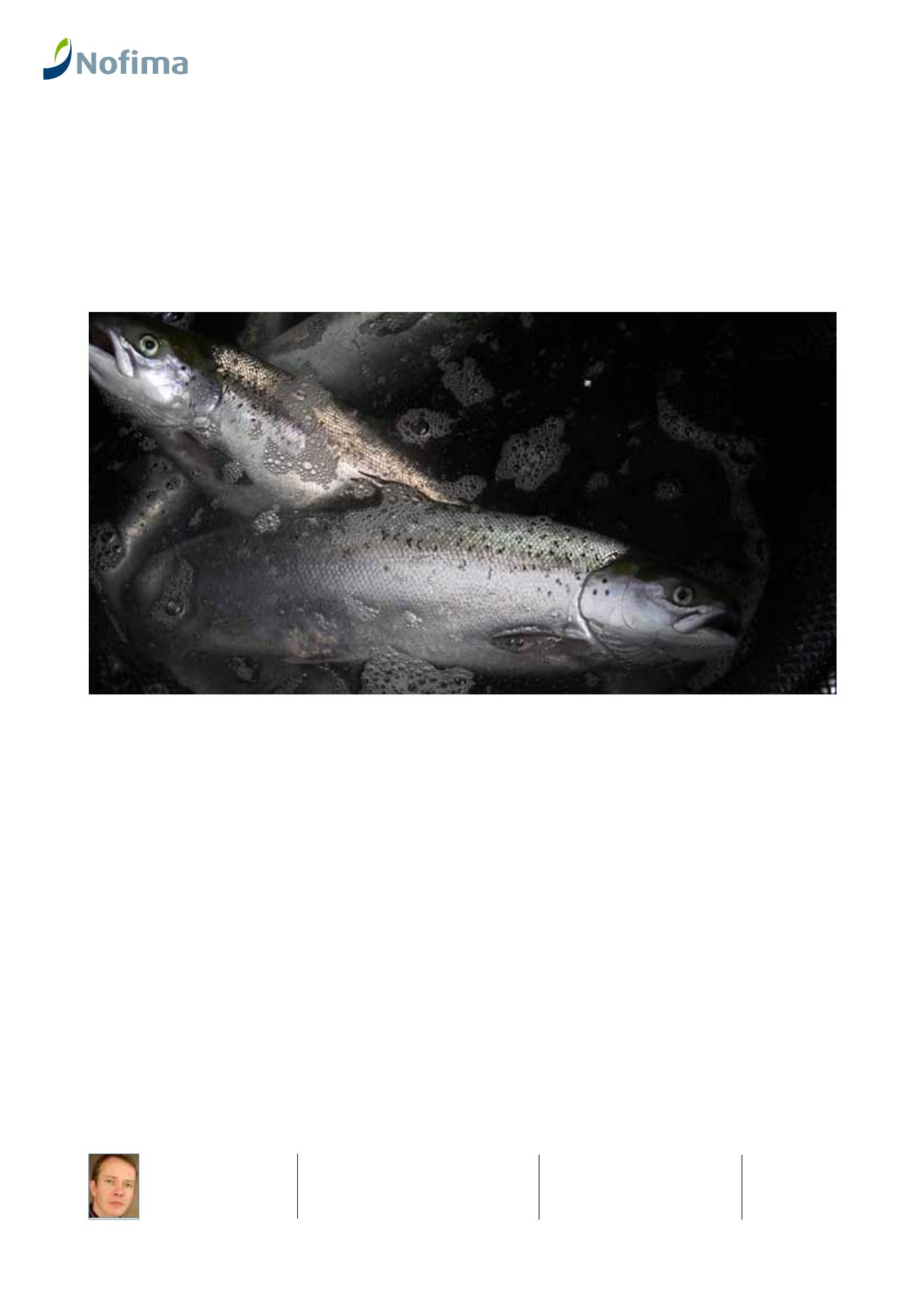
Creating value
2013
nofima.no
20
Better control of environment
financed by:
The Research Council of Norway,
an industry consortium and related
projects by the Norwegian Seafood
Research Fund
Partners:
Marine Harvest, Grieg, Smøla Klekkeri og
Settefisk, Lerøy, Lingalaks, Erko Settefisk,
Hauge Aqua, UNI Research, UiB, UMB, HiB,
NIVA and the Norwegian Veterinary Institute
Increased control in closed systems leads to fewer stress factors, and a controllable water intake makes it easier to avoid salmon lice.
photo: © nofima
Closed containment systems for aquaculture have a
closed or virtually closed physical barrier between the
production water and the surrounding environment.
These systems can have several advantages, but the
advantage of better control possibilities has not been
exploited sufficiently to date.
“We have studied what is needed to give salmon
of up to 1 kg (post-smolt) good growth conditions in
closed systems. Low salinity and exercise are key factors
for success, says Nofima Senior Scientist Bendik Fyhn
Terjesen.
Benefit from less salt and more exercise:
The
scientists carried out a pilot study of smolts weighing
70 g. Each of 12 tanks contained 600 smolts. There were
four tanks each with salinity of 12 parts per thousand
(‰), 22‰ and 32‰. Within each salinity group, the
smolts in two tanks were subjected to physical training
(high water velocity), while the other smolts were not
(low water velocity). The conditions for the fish in all the
tanks were otherwise identical (same feed, light and
temperature).
The trial showed that post-smolts grew slower and
mortality was higher if the salinity of the water was
high. The salinity of 12‰ gave the best results. Physi-
cal exercise had a positive effect on both heart size and
growth rate. The trial also showed that recirculating
aquaculture systems were most effective at the lowest
salinity, 12‰. The trial will now be repeated on a larger
scale with realistic industrial conditions.
The disadvantage of current closed systems is high
production costs. Knowledge about good environmental
and welfare conditions in closed systems will enable the
systems to be built and operated in a more purposeful
manner.
“A possible solution, providing environmental and cost
savings, is to keep post-smolts in closed systems up to
1 kg and then move them to traditional cages. This new
production platform may be coined `combination line´,”
says Terjesen.
Closed containment systems provide better control of the fish’s environ
ment as well as opportunities for better growth, health and welfare.


